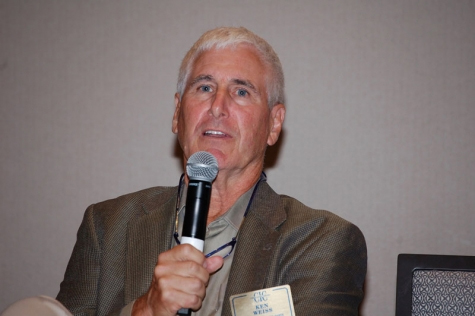The Collision Industry Conference (CIC) Parts and Materials Committee is continuing to push for more consistency in how parts are defined and described within the industry.
During the virtual CIC this summer, the committee showed how the list of parts categories varies among parts platforms and estimating systems.
CCC ONE has six parts type categories, for example, while Audatex and Mitchell have seven. Audatex has an “OE surplus” category, while CCC has “optional OEM” and Mitchell has “OE discount.”
The parts platforms that feed into the estimating solutions have their own categories.
APU Solutions, for example, segments out “surplus OEM” from “recovered OEM,” two categories not even found---by those names---in the estimating systems. APU’s Eric Marrello said “surplus OEM” parts are new OEM parts in OEM packaging, whereas “recovered OEM” are take-off parts, OEM parts that may have been temporarily installed or painted and then removed.
“We hope longer term that the industry will move in the direction to break those two part types out,” Marrello said. “Certainly we need to agree upon those definitions. But we saw five or seven years ago that those really aren’t the same part category. They need to have a different segmentation.”
The committee showed several flowcharts that demonstrate how all these variations in parts categories can result in the exact same part being described two different ways on estimates.
In the first, a vendor selling OEM parts outside of the authorized OEM channel enters those parts into a platform that uses the “OEM surplus” category for such parts. That platform feeds into an estimating system that uses the “optional OEM” label for those parts. California regulators, however, prohibit the use of the “opt-OEM” label.
“So while that part can go into the estimating platform as ‘opt-OEM,’ the end-user is required to choose what they are going to call it on the estimate,” said Aaron Schulenburg, who co-chairs the CIC committee. “You then have a situation where a shop repair plan, and an insurance company estimate, may each potentially choose different nomenclature for the exact same part. One may identify that as an aftermarket part, and one may identify it as an OEM part, and you have an estimating platform that allows for that choice.”
In another example the committee showed, a parts supplier may choose to refer to a part as a “Tier 1 replacement” part because it is manufactured and sold by Tier 1 suppliers, such as Denso and Bosch, who manufacture parts for automakers. But that’s a parts category none of the parts platforms or estimating systems currently use. So that part might be identified as “OE discount” in one parts platform and estimating system, but as “aftermarket” in another parts platform and estimating system, resulting in the same part being labeled differently on estimates.
In a third example, the committee showed where an “OEM take-off” part can end up categorized on an estimate as “recycled” or “OE surplus.”
Ken Weiss, who co-chairs the CIC committee, said parts suppliers may be genuinely unclear as to how to identify parts they are putting into the parts platforms, or directly into the estimating systems.
“But there are others who deliberately will elevate their part to the highest possible scenario they can,” Weiss said.
“This is where specific terms with specific definitions benefit the industry, rather than leaving things open to supplier interpretation or decision,” Schulenburg said. “We need to be doing our best to be as transparent as possible. There’s a big difference in someone looking at something called an ‘OE surplus’ part and assuming that’s an OEM part, versus the impression of what a ‘recycled’ part is. I think we need to do everything in our power to make sure we are distinguishing parts appropriately.”
The committee, however, has had difficulty reaching a consensus on what definitions and names for the parts types should be. The committee had been so polarized on the issue that Weiss and Schulenburg decided to break it into two “more like-minded” work groups to each form a proposal on how to most clearly describe parts available in the marketplace for those making parts decisions.
Weiss said his work group came up with six different categories of new parts, whereas Schulenburg’s work group simply defined four attributes of an OEM part, and said any new part not having all four of those attribute were “non-OEM.”
“That’s the struggle we got hung up on last year,” Weiss said at CIC this summer.










John Yoswick